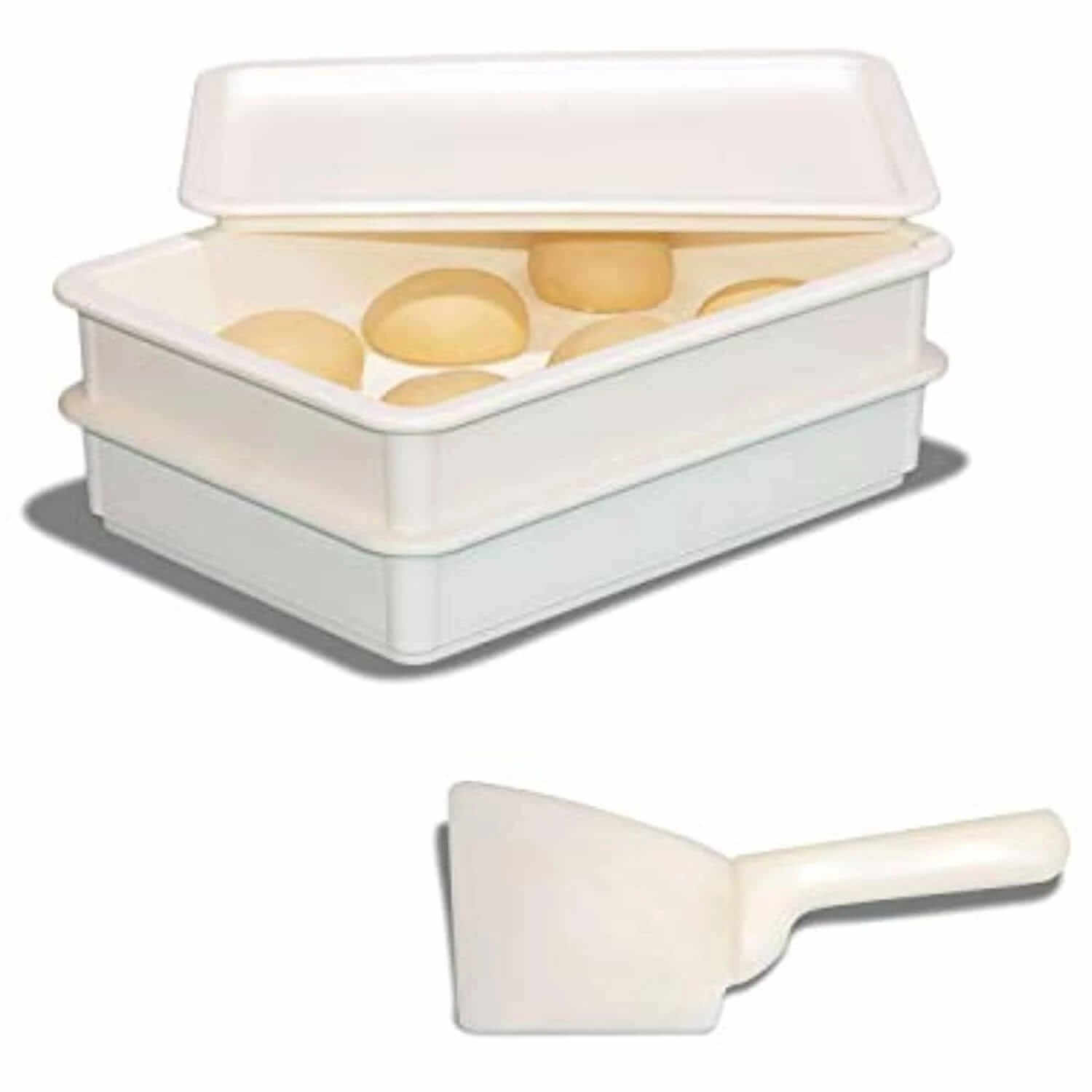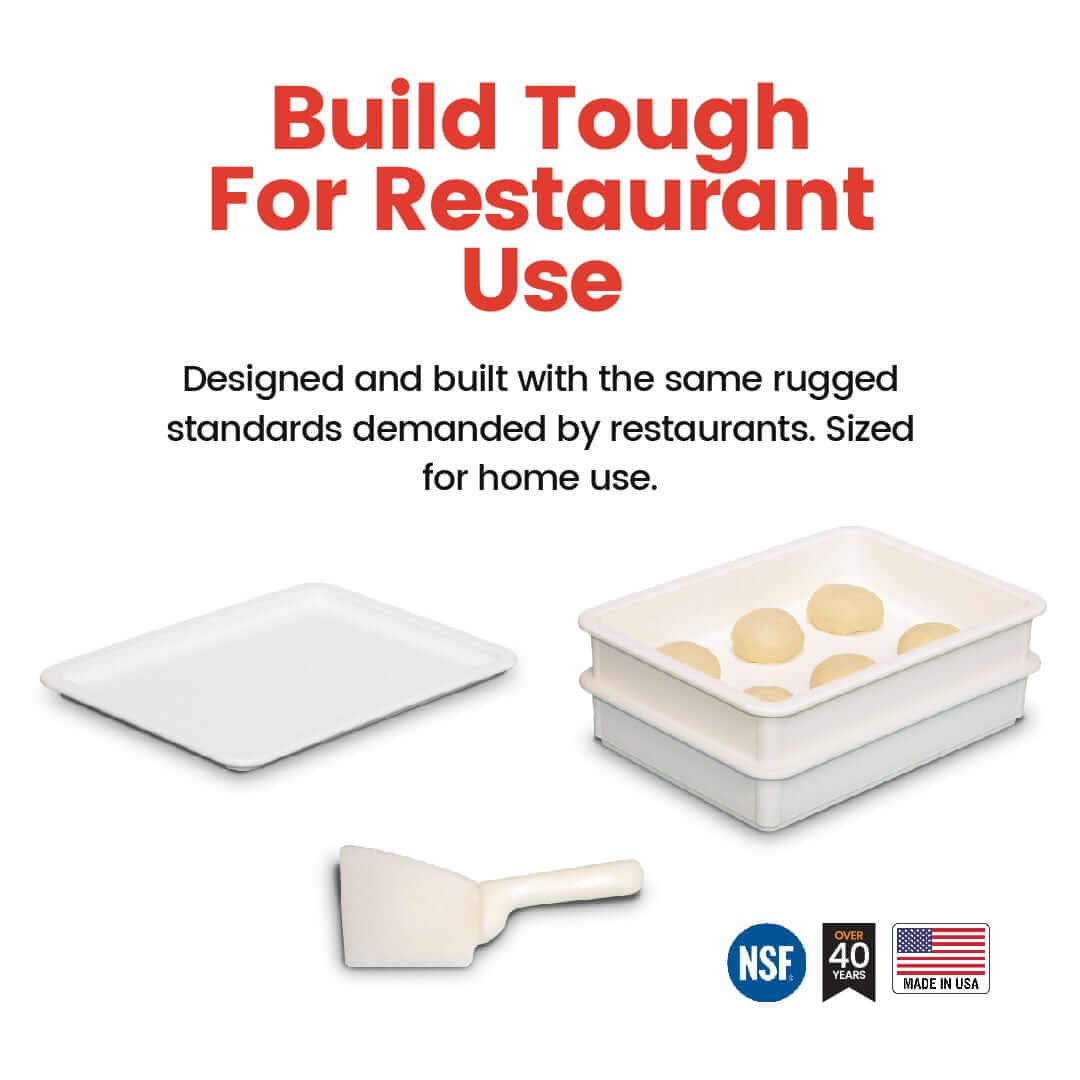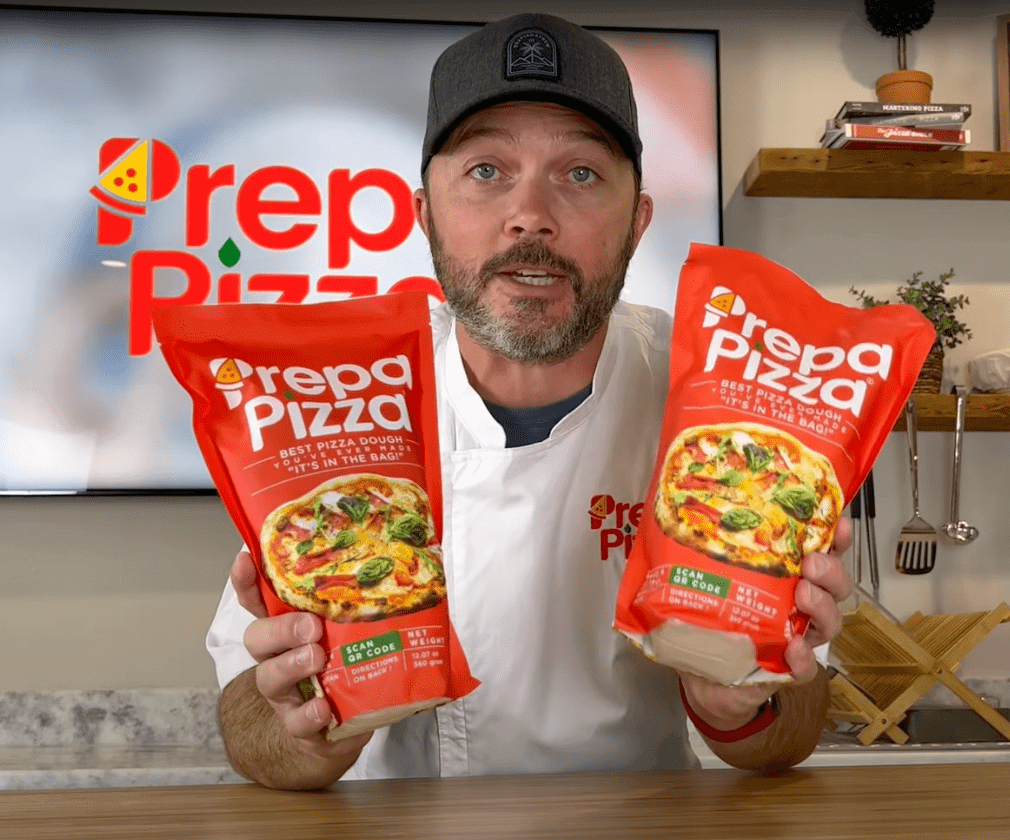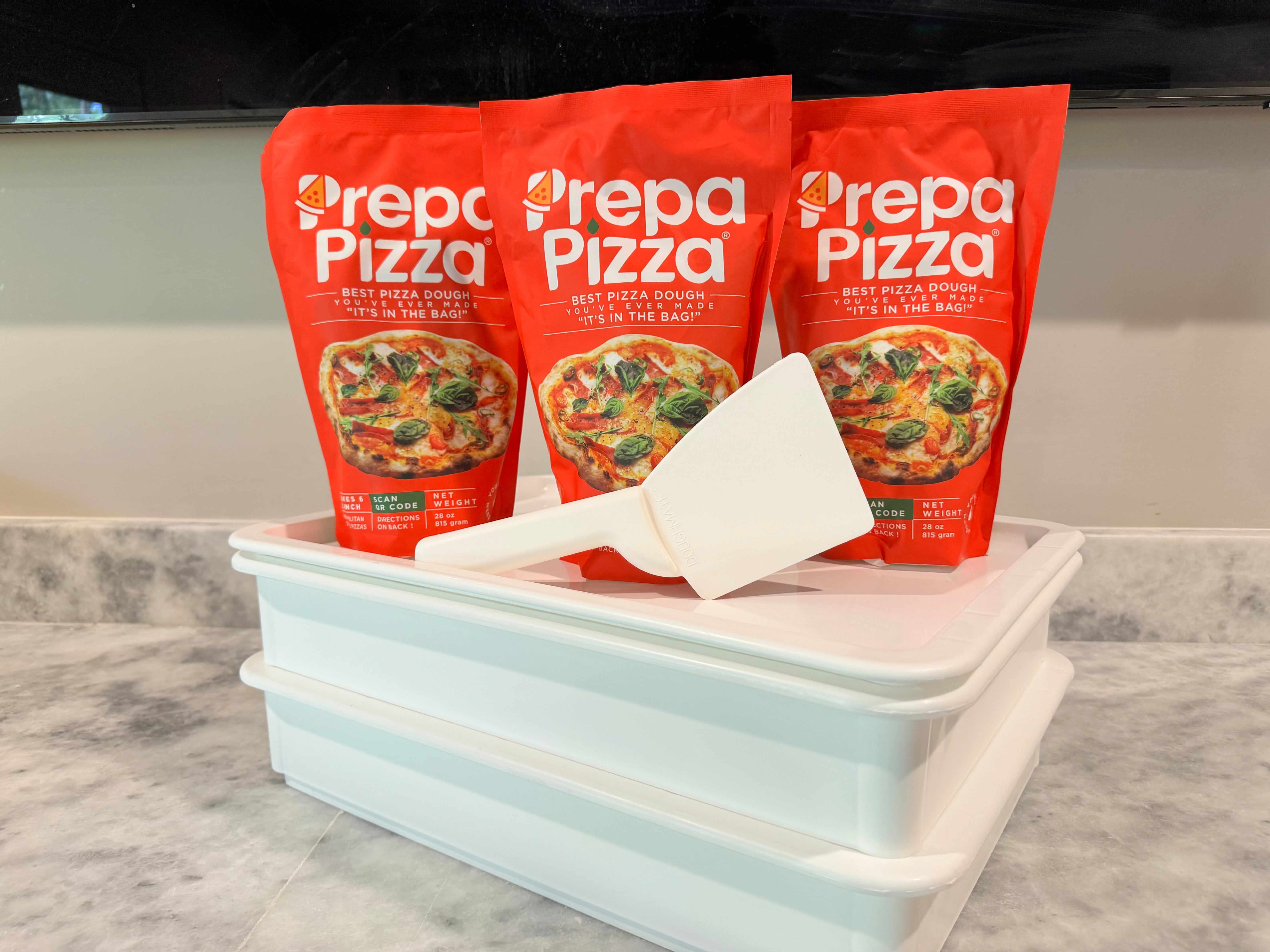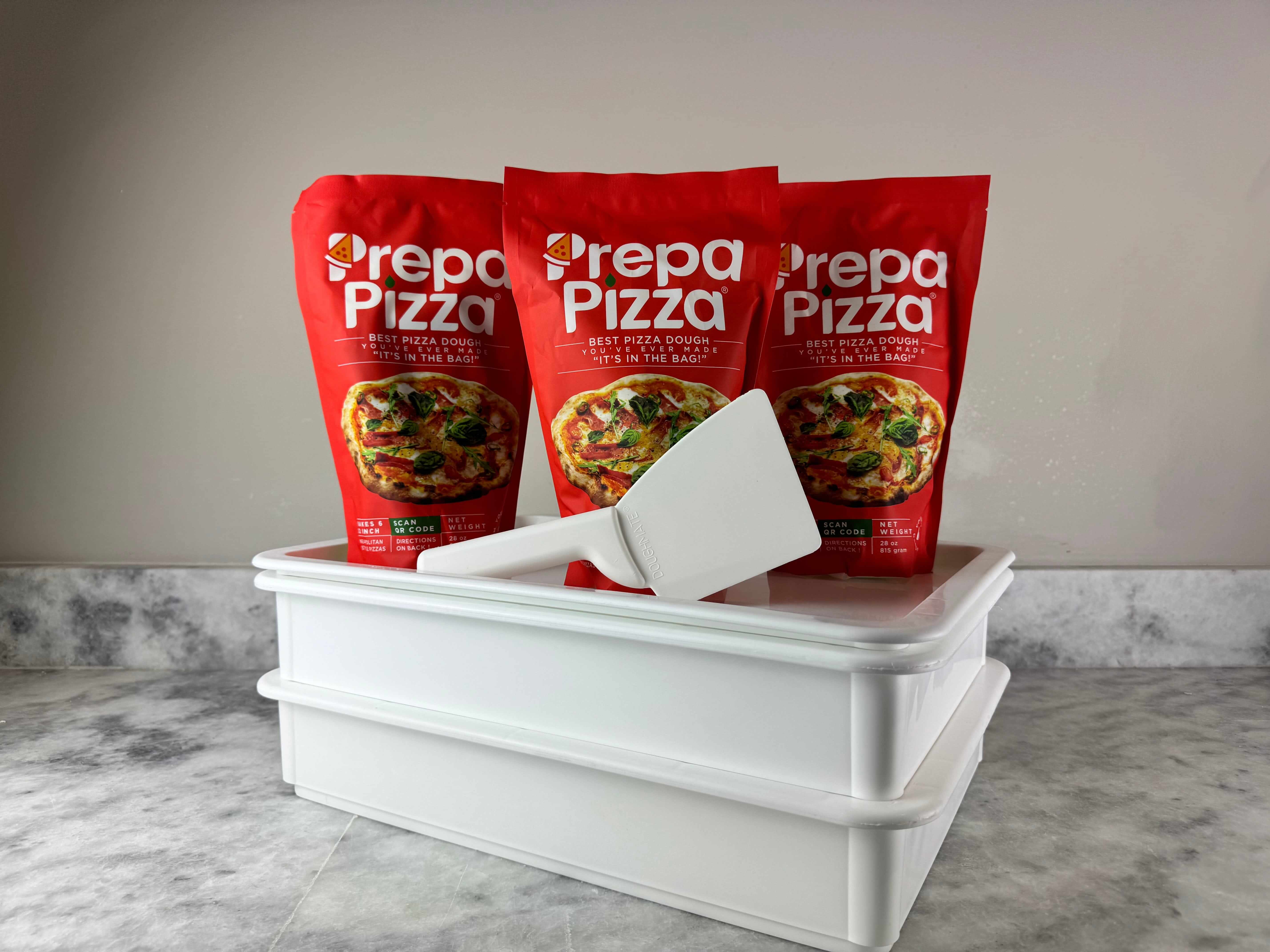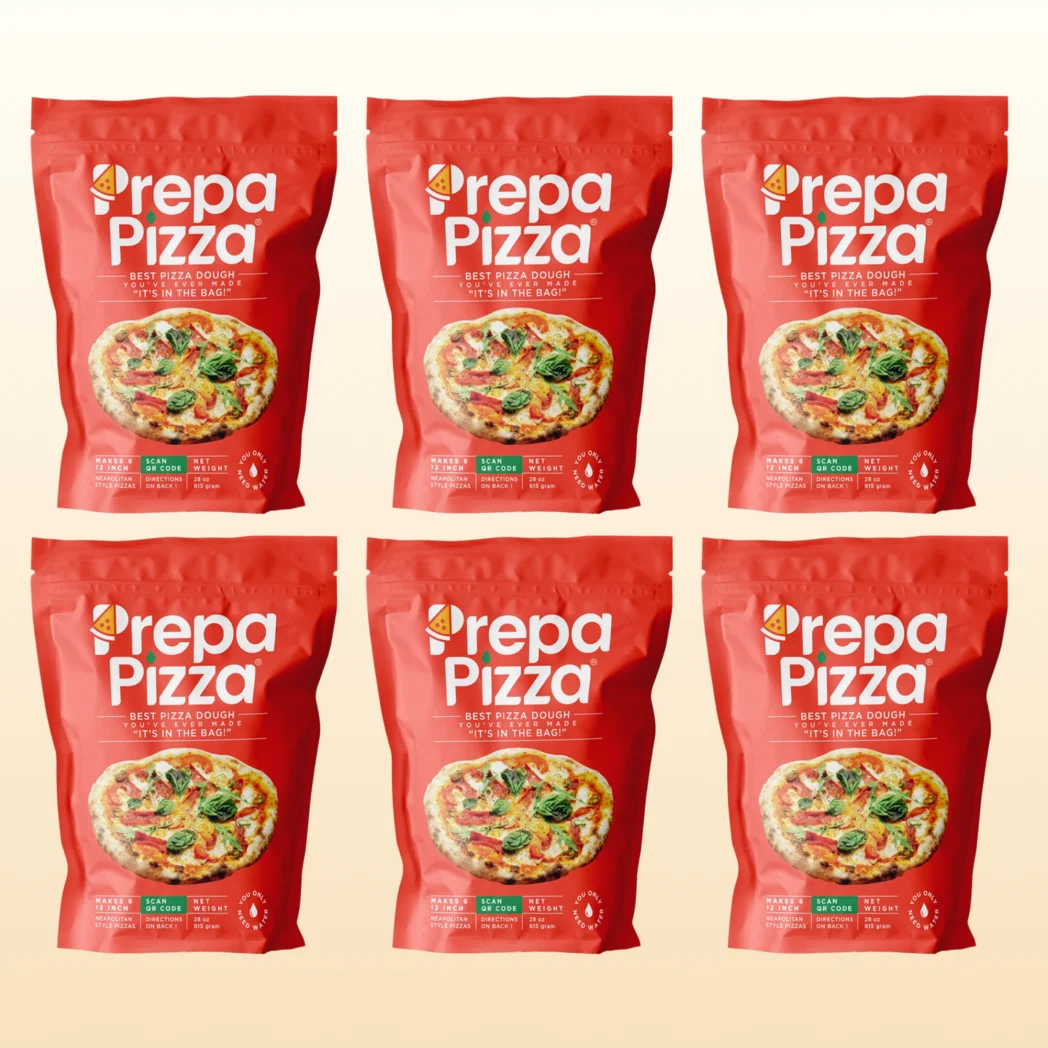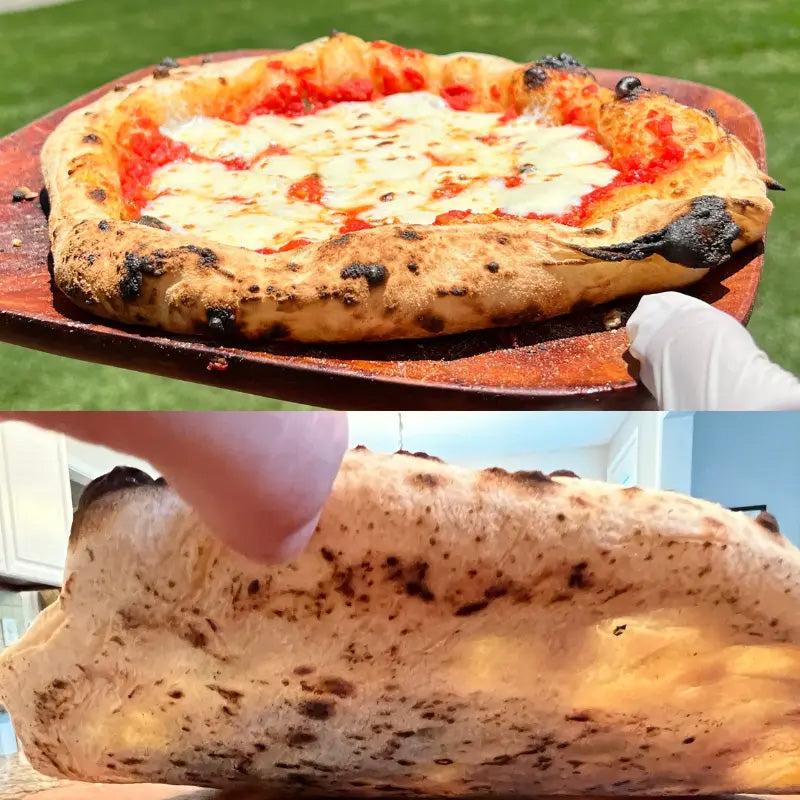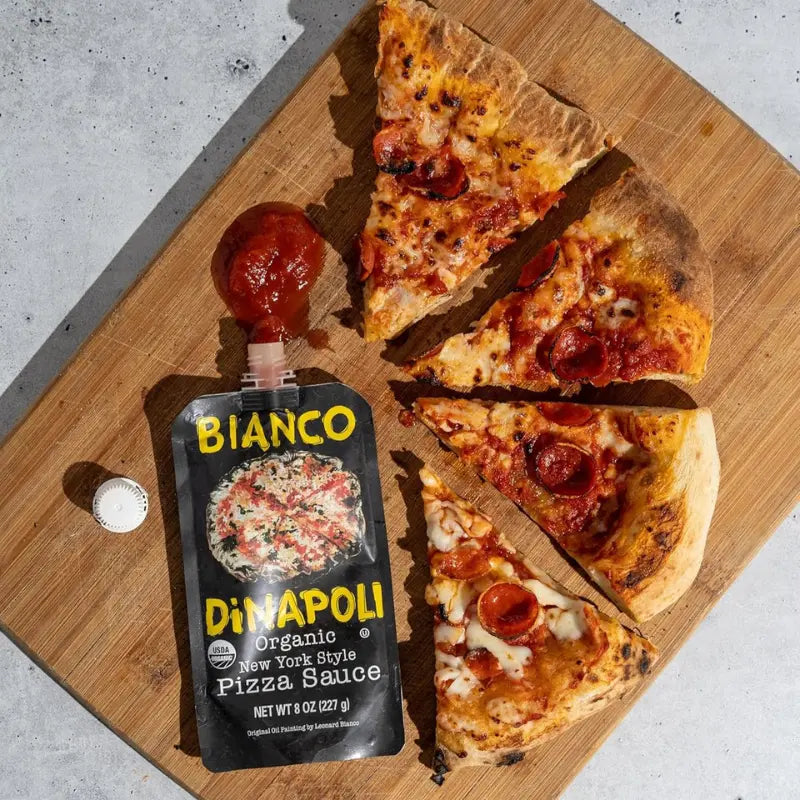
How to Cook Premade Pizza Dough in the Oven for Perfectly Crispy Results
When you want to enjoy homemade pizza night without the hassle of making dough from scratch, using premade dough is a smart choice. Prepa Pizza offers premium quality premade pizza dough made with restaurant-grade ingredients that ensure a great base for your pizza. Using this store-bought pizza dough saves time while still delivering excellent taste and texture.
To cook premade pizza dough in the oven, preheat your oven to a high temperature around 425-450°F, then bake the dough on a pizza stone or baking sheet until the crust is golden and crisp. This method guarantees a perfect crust that balances crispiness and chewiness, letting you create a delicious pizza any night of the week. Explore more and get your dough kit from Prepa Pizza to make your homemade pizza even easier.
Choosing and Preparing Premade Pizza Dough
Getting the right premade pizza dough that fits your baking style and flavor preferences is essential. Proper handling, storage, and knowing the dough’s ingredients help ensure a consistently good crust every time you bake.
Prepa Pizza offers premium quality store-bought pizza dough made with carefully selected ingredients, designed to replicate restaurant standards. You can find their dough kit at Prepa Pizza’s official product page, giving you a convenient and reliable foundation for your homemade pizza.
Selecting the Right Store-Bought Dough
When picking your store-bought pizza dough, focus on the type of flour used and the gluten content. Dough made from bread flour typically has higher gluten, which provides more elasticity and chewiness. All-purpose flour dough tends to produce a softer crust with less chew.
Look for dough that includes active dry yeast or similar yeast types for proper rise and texture. Quality dough, like Prepa Pizza’s, balances yeast, water, salt, and olive oil to achieve a perfect crust rise and flavor.
Be sure the dough is fresh and free from preservatives that might impact taste. Dough made with simple, natural ingredients generally bakes better and gives you a better platform for toppings.
Storing and Thawing Dough Properly
Store your premade dough in an airtight container or tightly wrapped to prevent it from drying out or absorbing odors from your fridge or freezer.
If frozen, thaw the dough gradually in the refrigerator for 12 to 18 hours. Rapid thawing at room temperature may compromise texture and flavor. Once thawed, let it rest at room temperature for about 30 minutes before shaping.
Avoid cutting corners by refreezing dough once thawed—it affects yeast activity and crust quality. Proper storage and thawing maximize dough elasticity, allowing you to stretch it thin without tearing.
Understanding Dough Ingredients
High-quality pizza dough relies on basic but balanced ingredients. The primary components include flour, water, active dry yeast, salt, and olive oil.
Flour type defines texture and gluten strength. Bread flour contains more gluten for chewiness; all-purpose flour produces a tender crumb. Water activates yeast and hydrates the dough. Yeast creates gas bubbles for rise, while salt controls yeast growth and enhances flavor. Olive oil adds moisture and improves dough elasticity.
Prepa Pizza’s dough uses restaurant-grade ingredients to ensure consistent results and mouthfeel. Knowing these ingredients helps you anticipate how the dough behaves when baked or handled.
Dough Handling and Shaping Techniques
Handling and shaping your pizza dough correctly is essential for achieving a crispy pizza crust with even thickness. Using Prepa Pizza’s premade dough, which is made from premium ingredients and quality bread flour for optimal gluten content, you can easily work toward restaurant-quality results. Proper resting, stretching, and flouring all contribute to the final texture and ease of handling.
Prepa Pizza’s dough comes ready for you to shape and bake, but taking some time to master these techniques will improve your pizza significantly. You can find their dough kit here.
Allowing Dough to Rest and Rise
Before shaping, let your dough come to room temperature for at least 30 minutes if refrigerated. This step relaxes the gluten, making the dough more pliable and less prone to tearing. Resting also allows natural yeast activity to continue, helping develop flavor and better texture in the pizza crust.
If your dough needs more rise, leave it covered in a warm spot for 1-2 hours. Using a light drizzle of olive oil over the dough's surface prevents drying out during this process. This resting period aids in forming a crispier crust when baked.
Stretching and Shaping for Even Thickness
To achieve an even pizza crust thickness, start by gently pressing the dough from the center outward. Avoid using a rolling pin, as it can compress the dough and reduce its airy texture. Instead, use your hands or a lightly floured surface to stretch the dough gradually.
Utilize a pizza peel dusted with flour or cornmeal to transfer the stretched dough to the oven. Pay attention to maintaining consistent thickness; thinner edges will crisp quickly, while thicker areas take longer to cook fully. Bread flour in Prepa Pizza’s dough helps provide the right gluten structure for easy shaping.
Preventing Sticking and Tearing
To avoid sticking, generously dust your work surface and hands with flour before shaping. You may also lightly oil your hands with olive oil, which helps keep the dough supple without drying.
Handle the dough gently, supporting it from underneath when transferring to avoid tears. If you notice any small holes, patch them by pinching the dough edges together. Preventing tears ensures the dough cooks evenly, preserving both the softness inside and the crispiness outside.
Following these handling steps will help you unlock the full potential of your premade pizza dough from Prepa Pizza.
Preparing the Oven and Baking Surfaces
To get the best results with Prepa Pizza’s premade dough, it's essential to prepare your oven and baking surfaces carefully. Proper heat distribution and the right tools will help you achieve a crispy crust and evenly cooked pizza.
Focus on preheating your oven thoroughly and selecting the right baking surface—whether a pizza stone, baking steel, or pizza pan. Each choice affects how heat transfers and cooks your dough.
Preheating for Optimal Results
Preheating your oven to the recommended temperature is crucial when using Prepa Pizza’s premade dough. Most recipes call for a temperature between 425°F and 450°F (220°C to 230°C). Preheating ensures the dough starts cooking immediately and helps develop a golden, crispy crust.
Allow your oven to heat for at least 20-30 minutes before baking, especially if you use a pizza stone or baking steel, which need extra time to reach their ideal temperature. This consistency prevents soggy or undercooked spots.
Avoid opening the oven door frequently during baking, as this causes temperature drops that affect dough rise and crust texture.
Using a Pizza Stone or Baking Steel
A pizza stone or baking steel mimics the floor of a professional pizza oven by providing intense, even heat. When preheated properly, these surfaces absorb and radiate heat directly to the dough’s base, resulting in a crunchier crust.
To use them, place your stone or steel on the middle oven rack during preheating. This ensures they reach the same temperature as the oven interior. Avoid placing the stone or steel directly on the oven floor, as this can cause uneven heating or damage.
Before placing your Prepa Pizza dough on the stone or steel, dust the surface lightly with flour or cornmeal to prevent sticking. Handle these surfaces with care, as they retain heat for a long time.
Choosing Pizza Pans or Baking Sheets
If you don’t have a pizza stone or baking steel, a metal pizza pan or baking sheet works well with Prepa Pizza’s premade dough. Use a light coating of oil or nonstick spray to prevent sticking and promote browning.
For crispier crusts, choose perforated pizza pans that allow better airflow under the dough. A solid baking sheet may result in a softer bottom crust but is easier to handle.
Preheat baking sheets by placing them in the oven while it heats up; this mimics stone or steel by delivering heat quickly to the dough. Always use oven mitts to handle hot pans safely.
For best results, place your pan on the middle rack to ensure even cooking of the crust and toppings.
Assembling and Topping Your Pizza
When working with Prepa Pizza’s premade dough, you start with a high-quality, restaurant-grade base that’s easy to prepare. Properly assembling and topping your pizza ensures an evenly cooked crust and balanced flavors, so your homemade pizza feels crafted and delicious.
Applying Sauce and Cheese
Begin by spreading a thin layer of pizza sauce over your rolled-out Prepa Pizza dough. Use the back of a spoon or a small ladle to evenly coat the surface, leaving about an inch of dough clear around the edges for the crust.
Choose fresh mozzarella for a creamy texture and clean taste. Tear it into small pieces instead of slicing to distribute it more evenly. Avoid overloading with cheese to prevent sogginess and ensure the crust crisps properly.
You can brush the edge of the crust lightly with olive oil before baking to enhance browning and add subtle richness. This step highlights the premium quality of your dough and improves the overall presentation.
Adding Fresh and Creative Toppings
Once your base layers are applied, add toppings thoughtfully to complement the sauce and cheese without overwhelming the dough. Fresh basil leaves work well added after baking to preserve their bright flavor.
Consider a mix of vegetables like sliced bell peppers, mushrooms, or caramelized onions. Meats such as thinly sliced pepperoni or Italian sausage add depth without weighed-down heaviness.
Keep toppings balanced for even cooking. Too many heavy ingredients can delay dough setting, leading to a soggy pizza. Using Prepa Pizza’s dough ensures a sturdy base that holds toppings securely as it bakes to perfection.
For recipes, try combining fresh mozzarella, basil, and a drizzle of olive oil for a classic Margherita style or experiment with roasted garlic and sun-dried tomatoes for a gourmet twist. Both highlight the dough’s premium texture and quality.
For more on Prepa Pizza’s premium dough and how it helps you create restaurant-quality pizzas, visit the Prepa Pizza dough kit product page.
Baking and Serving Store-Bought Pizza Dough
When using Prepa Pizza’s premade dough, you can expect a restaurant-quality base that bakes evenly and offers a crispy crust. Proper handling during baking and serving ensures the best results for your pizza night. Focus on precise oven placement, timing, and cutting techniques to maximize flavor and texture.
Transferring to the Oven
Before transferring your pizza dough to the oven, preheat it to 425-450°F (218-232°C). This temperature range is ideal for achieving a crispy crust without burning the toppings. Place the dough on a preheated baking sheet or pizza stone to ensure even cooking.
Use a pizza peel or a flat spatula to carefully move the dough, especially if you have added sauce and toppings. Avoid stretching the dough excessively, as this can cause uneven thickness. Position the pizza in the oven’s center rack to promote consistent heat distribution.
Monitoring Bake Time and Doneness
Store-bought dough from Prepa Pizza typically requires 10-15 minutes to bake fully. Watch for visual cues like the crust turning golden brown and cheese bubbling. Bake time can vary depending on your oven and the thickness of your toppings.
Check the pizza halfway through to prevent overcooking or burning. If the crust isn’t browning enough, consider moving the pizza closer to the oven’s heating element for the last few minutes. Use an oven mitt and a sturdy spatula to safely check underneath the pizza for a crisp bottom.
Slicing and Serving Techniques
After baking, allow the pizza to rest for 2-3 minutes before slicing. This helps the cheese set and prevents toppings from sliding off. Use a sharp pizza cutter or a large serrated knife for clean cuts through the crispy crust.
Cut your pizza into equal slices to ensure easy serving and portion control. For best results, apply a firm rolling motion with the pizza cutter rather than pressing down too hard. Serve immediately to enjoy the crust’s crispness and fresh flavors from Prepa Pizza’s premium dough.
Tips for Successful Homemade Pizza Nights
Using Prepa Pizza's premade dough gives you a high-quality start for your homemade pizza night. This restaurant-quality dough simplifies preparation and helps you avoid common pitfalls in baking. Proper planning and attention to dough handling will make your pizza night enjoyable and efficient. You can find the premium dough kit at Prepa Pizza's product page.
Every stage, from dough prep to leftovers storage, affects the final quality. Managing how you work with the dough, customizing toppings for dietary needs, and properly storing extra pizza can improve your pizza night experience. These details ensure a crisp crust, balanced flavors, and prevent waste.
Avoiding Common Mistakes
The biggest mistake is skipping the pre-bake step. Prepa Pizza's premade dough benefits from a 5–7 minute pre-bake at 425°F (220°C) to create a firmer base before adding toppings. This prevents soggy crusts and ensures even cooking.
Avoid overloading your pizza with sauce or toppings. Applying too much moisture can weigh down the dough, causing it to become soggy and difficult to bake through. Keep toppings balanced and spread evenly.
When rolling out the dough, use light flour dusting to prevent sticking but avoid excess flour, which can burn in the oven. Roll to your desired thickness but remember thin crusts cook faster and crisp better.
Customizing for Dietary Needs
You can adapt your homemade pizza night to various dietary preferences without compromising flavor. For gluten-free or low-carb needs, top Prepa Pizza’s dough with vegetables, lean proteins, and low-moisture cheeses.
Consider using lactose-free cheese or vegan cheese alternatives if you or your guests are lactose intolerant. Be mindful to use toppings low in water content to protect the dough's texture.
Create customizable stations with pre-measured ingredients to accommodate different diets. This approach keeps preparation organized and inclusive, making pizza night enjoyable for everyone involved.
Storing Leftovers Safely
After your pizza night, store leftovers quickly to maintain freshness. Let pizza cool slightly but don’t leave it out for more than two hours to prevent bacteria growth.
Place slices in an airtight container or wrap tightly with plastic wrap to avoid drying out or absorbing fridge odors. Store leftovers in the refrigerator for up to 3-4 days.
When reheating, use an oven or skillet instead of the microwave. This keeps your pizza crust crisp and prevents sogginess, preserving the quality you expect from your homemade effort with Prepa Pizza dough.
Frequently Asked Questions
Cooking premade pizza dough properly depends on using the right oven temperature and baking time. Understanding how to use tools like pizza stones or baking trays, when to preheat the oven, and how toppings affect cook time will help you get consistent results. Knowing the signs of fully cooked dough ensures your pizza is ready to enjoy.
What is the ideal oven temperature for cooking premade pizza dough?
For the best crust, preheat your oven to around 475°F to 500°F. This high heat helps achieve a crispy outside and a tender inside.
Prepa Pizza’s premade dough is designed to perform well at these temperatures, giving you a restaurant-quality crust every time.
How long should I bake premade pizza dough to get the best results?
Bake raw premade dough for about 12 to 15 minutes. If using pre-baked dough from Prepa Pizza, the time usually reduces to 5 to 7 minutes.
Times may vary slightly depending on dough thickness and toppings, so start checking after 10 minutes.
Should I preheat my oven before baking a pizza with premade dough?
Yes, always preheat your oven fully before baking. Preheating prevents uneven cooking and ensures the dough cooks through and crisps properly.
Prepa Pizza recommends waiting until the oven reaches the desired temperature before placing your pizza inside.
Do I need to use a pizza stone or baking tray for premade pizza dough?
A pizza stone helps create a crispier crust by evenly distributing heat and absorbing moisture.
If you don’t have a stone, a baking tray works well too—just consider lightly oiling it to prevent sticking and promote browning.
Can I add toppings to the pizza dough before baking, and will it affect the cooking time?
You can add toppings before baking, but heavier or wetter toppings might increase the baking time slightly.
Adjust the time accordingly to ensure the dough cooks fully and toppings are heated through. Prepa Pizza’s dough handles a variety of toppings without compromising texture.
How can I tell when my premade pizza dough is fully cooked and ready to eat?
Look for a golden-brown crust with firm edges and a slightly springy center when pressed lightly.
The bottom of the crust should be firm, not doughy or soggy. If unsure, you can check hardness by lifting the pizza gently to see if the crust supports its weight without bending.




